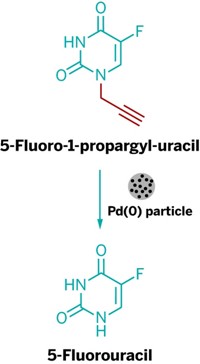Advertisement
Grab your lab coat. Let's get started
Welcome!
Welcome!
Create an account below to get 6 C&EN articles per month, receive newsletters and more - all free.
It seems this is your first time logging in online. Please enter the following information to continue.
As an ACS member you automatically get access to this site. All we need is few more details to create your reading experience.
Not you? Sign in with a different account.
Not you? Sign in with a different account.
ERROR 1
ERROR 1
ERROR 2
ERROR 2
ERROR 2
ERROR 2
ERROR 2
Password and Confirm password must match.
If you have an ACS member number, please enter it here so we can link this account to your membership. (optional)
ERROR 2
ACS values your privacy. By submitting your information, you are gaining access to C&EN and subscribing to our weekly newsletter. We use the information you provide to make your reading experience better, and we will never sell your data to third party members.
Analytical Chemistry
Double-Duty Cancer Killer
Porphyrin dimer first helps to kill a cancer cell and then act as a beacon for the cellular viscosity changes that result from the fatal blow
by Sarah Everts
March 16, 2009
| A version of this story appeared in
Volume 87, Issue 11
A new two-for-one molecule that helps kill cancer cells can also act as a beacon for the cellular viscosity changes that result from the fatal blow. The molecule could become a useful tool for researchers who wish to study drug transport and diffusion in cells, note chemists Marina K. Kuimova of Imperial College London and Peter R. Ogilby of the University of Aarhus, in Denmark, who developed the compound (Nat. Chem., DOI: 10.1038/nchem.120). The European team first built a conjugated porphyrin dimer that creates cytotoxic oxygen species when irradiated with light, a clinical cancer treatment also known as photodynamic therapy. The team then examined the rotation of the porphyrin dimer by monitoring the fluorescence of the molecule as it spun within a cell, a motion that correlates with cellular viscosity. The chemists show that there is an increase in the viscosity of a cell by about an order of magnitude near the molecular beacon after cell death has been initiated. The viscosity jump may be the result of cross-linking reactions catalyzed by the reactive oxygen species, but this is still under investigation, Kuimova notes.




Join the conversation
Contact the reporter
Submit a Letter to the Editor for publication
Engage with us on Twitter